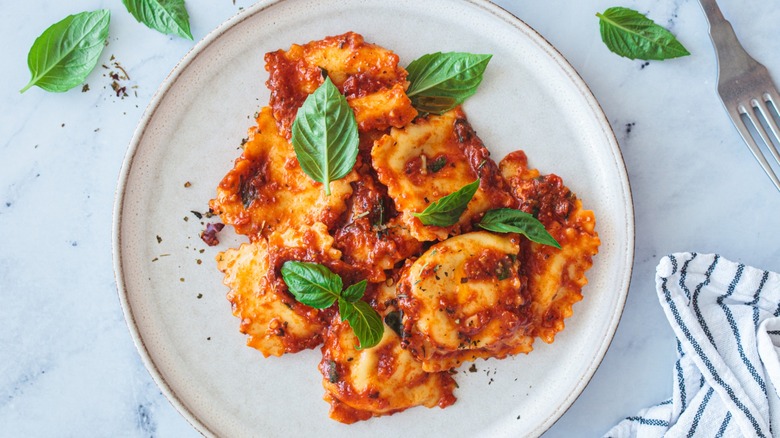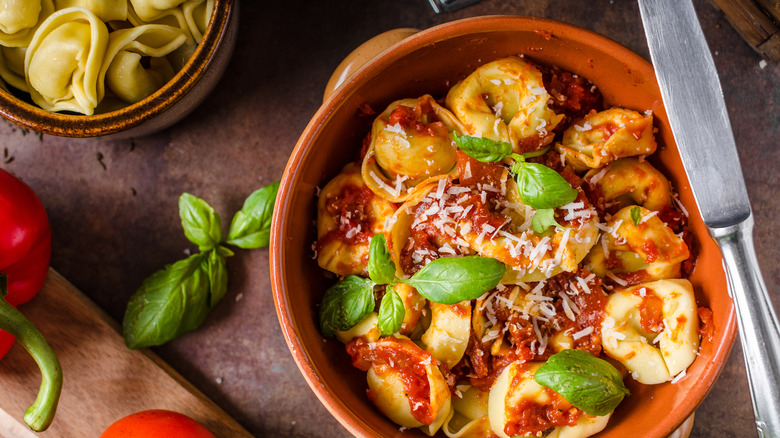The Thawing Tip To Consider Before Cooking Frozen Pasta In A Skillet
Most times, we'd love to enjoy a plate of freshly made pasta with a sauce that's been labored over for hours. But long days require a quick, simple meal at night, and frozen pasta tends to be it. The hearty meal frequently makes it onto our plates for an easy dinner and we have a thawing tip that will get it there a little quicker.
If you're obsessed with Trader Joe's frozen pasta or any frozen variety, then you're well-acquainted with the steps it takes to prepare it — add the noodles to boiling water, then serve it with your favorite sauce. However, you can easily skip one of these steps if you were to completely thaw the pasta beforehand. If it's no longer frozen, you can go straight to cooking the noodles in the sauce and bypass the boiling step. Heating the pasta in water serves to defrost the noodles and then cook them, but that isn't necessary.
While it takes around seven minutes to boil frozen pasta, you can heat it in the sauce within two. The shorter cooking time and flavor pay-off show why it pays to cook pasta directly in the sauce rather than water. The noodles are given more time to take in the flavors of the sauce rather than simply being caked in it once they're ready to be served. The method also requires less cleanup, which is everything we desire from a lazy meal.
Here's how to thaw frozen pasta
If you know that you'll be having frozen pasta the next day, place the package in the refrigerator the night before. It'll take around 24 hours for it to thaw completely. Although the process is long, allowing the noodles to defrost in the fridge prevents bacterial spread while also giving you the freedom to place it back in the freezer if you're not ready to use it. If the pasta hasn't completely thawed by the time you're ready to cook, that's okay. You'll just need to heat it in the sauce for about two minutes longer.
If you don't have time to wait, you can quickly defrost frozen pasta in the microwave. Place the noodles in a microwave-safe bowl with a small amount of water to prevent them from sticking together. Use the defrost setting to thaw it for two minutes, then check to see if it's no longer frozen. Afterward, the pasta can be defrosted in one-minute intervals to ensure that it doesn't cook in the microwave. Once it's thawed, you'll need to cook it right away to prevent it from lingering around in the danger zone for reheating food.
While the thawing method tends to work for pasta like ravioli, tortellini, or cappelletti, it's not great for something delicate like gnocchi. Thawing gnocchi makes it overly soft, causing the dumplings to stick together. Instead, they should be cooked straight from the freezer.

